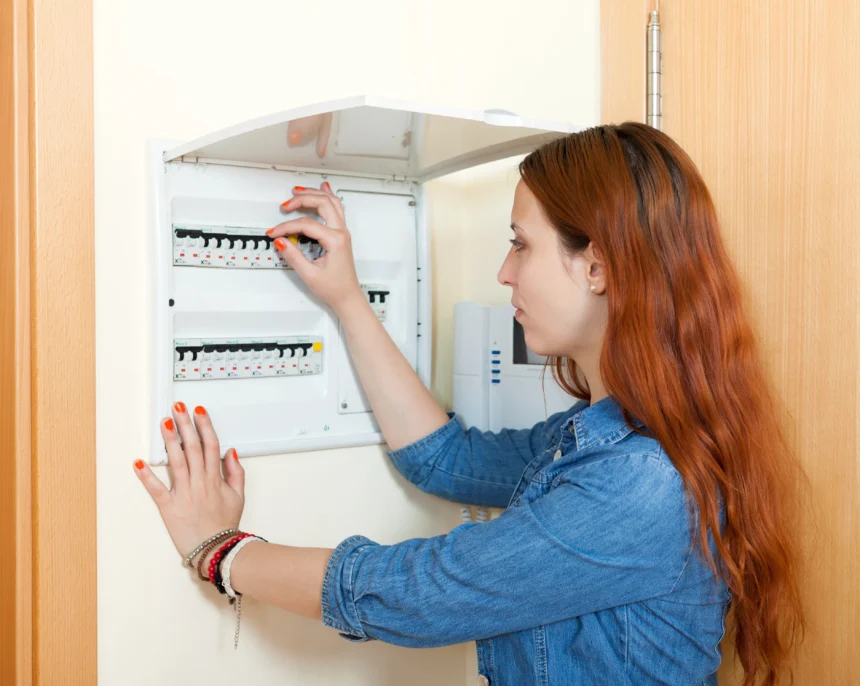While thinking about open houses and picturing their future, people tend to forget to check important details like the home’s electrical system.On the outside, the home can look perfect, but a home can become a very costly nightmare if there is faulty wiring. So, what electrical checks are essential before finalizing your home purchase? Let’s examine the basics that need to be checked to make sure your forever home is functional, safe, and prepared for your family.
Start with a Professional Electrical Inspection
The first thing you should do is hire a licensed electrician to conduct an inspection. This shouldn’t be a quick look at the power outlets, in fact, it should be a glance at the entire electrical system of the building. A reputable electrician, such as those providing electrical services in Sydney, will verify that the combination of wiring, switchboard, and appliances meets the current Australian standards. During the inspection, they will look for any signs of outdated materials, structural wear and tear, and installations that may be deemed as risky, such as installations that have improper materials or are old.
In the process of inspection, electricians evaluate the wiring as well. Homes constructed before the 1980s are well known for having aluminium wiring or systems that are outdated. These don’t comply with the requirements of modern safety standards. They also inspect overloaded circuits, which are common in homes where the former owners have constructed extensions without upgrading the electrical systems. This process is important and is not to be skipped, as it protects the owners from inheriting non-compliant or substandard electrical systems.
Inspect Switchboards and Safety Switches
The switchboard is the heart of your home’s electrical system, controlling how electricity is distributed and protecting the system from faults. When you evaluate your potential forever home, ensure the switchboard is modern and features safety switches, also known as residual current devices (RCDs). These devices are required in Australia for new homes and renovations. RCDs detect faults and disconnect power to prevent shocks or fires. If the home you are interested in doesn’t have RCDs, you’ll have to budget for their installation.
Assess the overall condition of the switchboard. Is it cluttered with obsolete fuses or ceramic parts? If so, that’s a cause for concern. A switchboard in modern homes should have circuit breakers and RCDs and should be tidy and without rust or damage. If the home is vintage, ask your electrician if the switchboard can handle modern appliances like air conditioners, electric ovens, or electric vehicle chargers. Since upgrading a switchboard can be costly, having this information in advance helps with budgeting your retirement real estate dream.
Check Power Points and Lighting
Next, take a walk through the home and inspect power points and lighting. Do the power points and lighting in each room meet your needs? Older homes may have only one or two power points in a room. Look for damage such as cracked power points, which may suggest overheating or poor maintenance. Also test the outlets under each wall to ensure that they work. If you have a small device plug or a voltage tester, they can also be used.
Lighting should be checked next. Are the fixtures modern and energy-efficient? LED lighting is the standard in newer homes, while older houses might still have incandescents or even halogens, which are less efficient and cost more to run. Lighting which flickers or is dim in an area can be a sign of wiring issues or overloaded circuits. If the home has outdoor areas like a patio or garden, check if the outdoor lighting and power points are weatherproof. As Australia has very harsh weather, correct outdoor lighting installation and its power points are essential.
Look for Signs of Noah Builders’ Electrical Work
Australians generally like DIY work; however, when it comes to the electricity, amateur fixes can be dangerous. During your inspection, watch out for any of the following: exposed wiring, power points that don’t match, or power points that are installed hastily. A major safety concern is when the owner tries to cut corners; power point matching is one example of this. Given the Australian work laws, a certified electrician must do all workmanship, so any electrical work that is done by the owner is dangerous as well as illegal.
Electrical work documentation is necessary to verify repair work. Ask either the seller or the real estate agent for documentation confirming electrical work. Any construction done by a reputable electrician will include a Certificate of Compliance showing the work meets Australian standards. You should be wary of undocumented electrical work or no work history provided by the seller. Nobody wants to bear the cost of another person’s inadequate work in their forever home.
Look Into Future-Proofing Your Electrical System
Think about your home’s electricity needs in a long-term scenario. As an example, if you want an EV charger, solar panels, or smart home implementation in the future, these should be catered for in your system. Check with your electrician about the current setup and whether it can support the upgrades. If the electrician says change is needed, ask for the scope to determine the exact costs of additional wiring, a bigger switchboard, or other electrical works that might be required.
Energy efficiency matters too. With electricity becoming more expensive, an efficient electrical system in a home can provide long-term savings. Even pre-installed solar wiring, smart metres, or energy-efficient appliances matter and should be checked, especially for those who have purchased real estate for retirement. They are beneficial not only to the environment but also keep the bills low.
Don’t Forget the Outdoor Areas
Outdoor areas, such as patios, gardens, or even sheds, require electrical inspections. Check the safety and weatherproof compliance of the electrical items if the property contains a spa, outdoor kitchen, or pool. Outdoor lighting should be on RCD-protected circuits for safety reasons. If there is a shed or garage, verify its power supply to determine if it is sufficient for the tools or equipment you would like to use.
The Australian environment, including scorching sun, heavy rain, or salty coastal air, demands that outdoor electrical systems be made sturdy. Faulty wiring outdoors results in damages that need to be fixed and are pricey. With these inspections done, you can relax knowing that your backyard paradise is protected as the rest of your house is.
Wrapping It Up: Make Electrical Checks a Priority
For sure, everyone anticipates purchasing their forever home, but the process involves a comprehensive checklist, with electrical issues far too often ignored. Initially skipping an electrical inspection could save on time or money, but that decision probably exposes oneself to some serious unplanned safety hazards or hefty costs. Alongside the specialist inspections, undertaking scrutiny of the switchboard, light and power points, and scouring for unsanctioned DIY breakages ensures the new property is compliant, safe and suitable for long-term settlement. In addition, thinking about future-proofing and outdoor areas also positions one in a sustainable and comfortable lifestyle.










 /home/u448362301/domains/theexpotab.com/public_html/wp-content/themes/foxiz/templates/popup.php on line 167
/home/u448362301/domains/theexpotab.com/public_html/wp-content/themes/foxiz/templates/popup.php on line 167